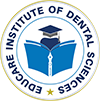Educare Institute of Dental Science, where we unravel the complexities of dental treatments to empower future dental professionals with knowledge and expertise. Educare Institute of Dental Science delve into the realm of dental implants, focusing on the two primary types: Endosteal and Subperiosteal. By understanding the differences between these implant types, we aim to provide clarity and insight into their respective applications and benefits.
Endosteal Dental Implants: Endosteal implants are the most commonly used type of dental implants and are surgically placed directly into the jawbone. These implants consist of small titanium screws or cylinders that serve as artificial tooth roots. Once implanted, the jawbone fuses with the titanium surface through a process called osseointegration, providing a stable foundation for prosthetic teeth, such as crowns, bridges, or dentures.
Key Features of Endosteal Implants:
- Stability and Durability: Endosteal implants offer exceptional stability and durability, mimicking the natural structure of tooth roots and providing long-term support for prosthetic restorations.
- Versatility: Endosteal implants can accommodate various types of prosthetic restorations, making them suitable for single tooth replacement, multiple teeth replacement, and full arch reconstruction.
- High Success Rate: With proper care and maintenance, endosteal implants boast a high success rate and can last a lifetime, significantly improving oral function and aesthetics for patients.
Subperiosteal Dental Implants: Subperiosteal implants are an alternative option for patients who lack sufficient bone density or height in the jawbone to support traditional endosteal implants. Instead of being placed within the jawbone, subperiosteal implants are positioned on top of the jawbone beneath the gums. These implants feature a metal framework with posts that protrude through the gums, providing support for prosthetic teeth.
Key Features of Subperiosteal Implants:
- Bone Preservation: Subperiosteal implants offer a viable solution for patients with bone loss or insufficient jawbone structure, as they do not require extensive bone grafting procedures.
- Minimally Invasive: Compared to traditional bone grafting surgeries, the placement of subperiosteal implants is relatively less invasive and may be suitable for patients who wish to avoid extensive surgical procedures.
- Restorative Flexibility: Subperiosteal implants can support various types of prosthetic restorations, ranging from single crowns to full arch bridges, restoring oral function and aesthetics for patients with missing teeth.
Dental implants have revolutionized the field of restorative dentistry, offering effective solutions for tooth loss and oral rehabilitation. Whether it’s the conventional endosteal implants or the alternative subperiosteal implants, each type presents unique advantages and considerations based on individual patient needs and anatomical factors. At Educare Institute of Dental Science, we equip aspiring dental professionals with the knowledge and skills to navigate the complexities of implant dentistry, ensuring optimal outcomes and patient satisfaction.

